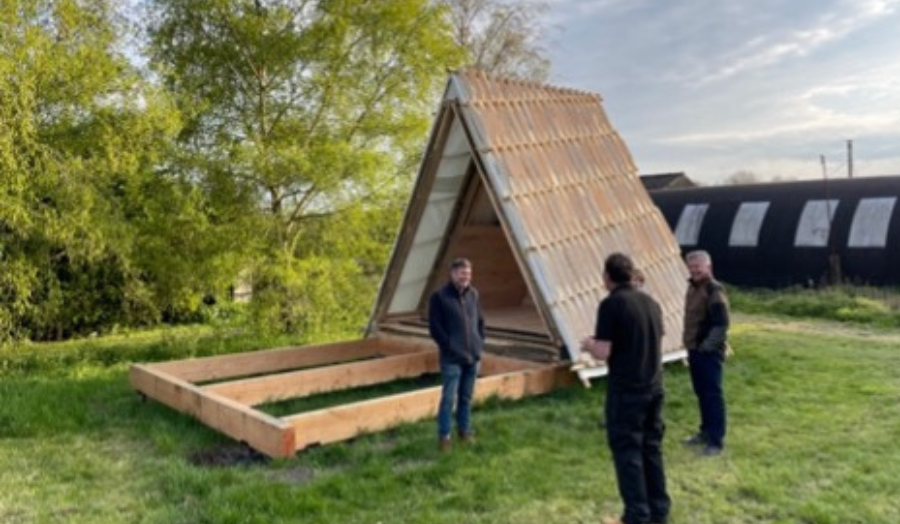The Home Grown Cabin is a collaborative research programme funded by the Forestry Commission, London Metropolitan University and Grown in Britain. The cabin demonstrates the regenerative, circular and scalable potential of locally sourced coppiced hardwood in construction. The building is designed as an educational demonstrator, promoting the potential of durable locally grown hardwood in the built environment by revealing its layers of construction. Fast growth, unseasoned coppiced sweet chestnut timber was used to make low embodied energy and low embodied carbon structural insulated panels (SIPS). The SIPS are based on a Vierendeel truss made from two inverted half-rounds of coppiced timber cut from a single, straight-growth pole.
Use of locally sourced coppiced timber promotes regional biodiversity, woodland health, a sustainable local economy and carbon capture and storage. The A-frame design of the cabin facilitated minimal processing steps, reduced cost and increased speed of construction. The result is a novel and sustainable SIPS building system made from local hardwood that can be prefabricated, assembled/disassembled and re-used as part of a regenerative circular economy.

Project details
George Fereday, PI, London Met
Guy Nevill, Birling Farms Partnership (Forestry, timber supply)
Dougal Driver, Rachel Lawrence, Grown in Britain (Timber certification/project management)
David Leviatin, Nick Meech, Rick Duce (Carpentry/Construction)
Project
- To demonstrate the regenerative, circular and scalable potential of locally sourced coppiced hardwood in construction.
- To develop simple, scalable, cost-effective low-waste processing methods of small diameter roundwood.
- To design value-added uses for locally grown hardwoods that divert the material away from the firewood and biomass markets.
- To stimulate active woodland management for improved tree health and biodiversity.
- To provide a case study for sustainable, scalable, locally made homes for London.
Trade Journal Articles:
Public Outreach:
Fereday, George (2023) Home Grown Cabin – regenerative, sustainable and demountable timber construction using green sweet chestnut coppice and diseased ash. Timber 2023. London: Institute of Materials, Minerals & Mining (IOM3), 29th November.
Artefact:
Award Finalist, Structural Timber Awards 2022
